- Joined
- Feb 17, 2013
- Messages
- 4,406
A couple of recent projects on my lathe made me aware that really I needed a carriage stop of some kind. I had an old one made for another lathe (no idea where or when I got it), but it wouldn't fit my 12x24.
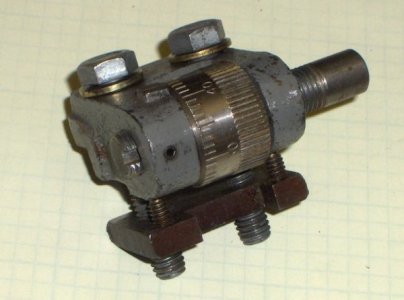
I measured the lathe ways and designed a new stop body that would re-use the already engraved dial and 7/16-20 rod from the existing stop. Trouble is, I just don't have a decent supply of larger "chunks" of steel or cast iron. Matter of fact, the only things I could find were a couple of very rusty 4" long pieces of 2" steel rod, pedigree unknown. IIRC, I'd used these on an outdoor gadget for a number of years. I could carve the body of the stop out of one of these, though the corners would be lopped off by the 2" circle ... OK, pretend these are chamfered edges!
After giving the steel a good soak in Evaporust and a good scrub to remove what little paint was left, I got out my new Shars face mill and started to go for it. The mill did a very nice job, and I was getting tan-to-blue chips. Whatever this steel is, it was very easy to machine. Here's the completed first face, plus some of the swarf.
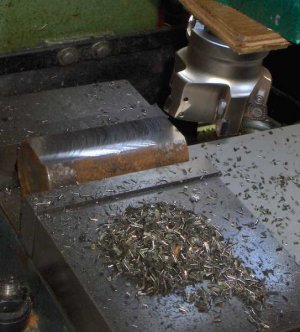
Here's the completed body of the stop, along with a second chunk of raw material. Though I'd made a couple of setup/machining errors in the process, I was able to correct them successfully, and had a whale of a good time doing it!
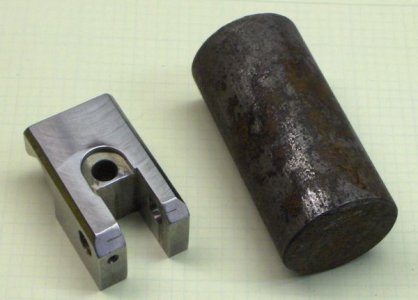
... and the completed stop, ready to go to work ...
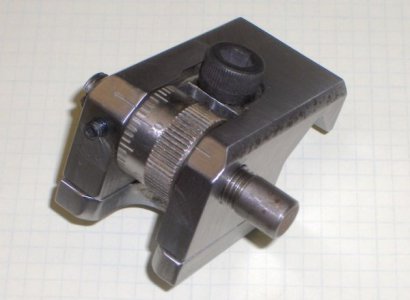
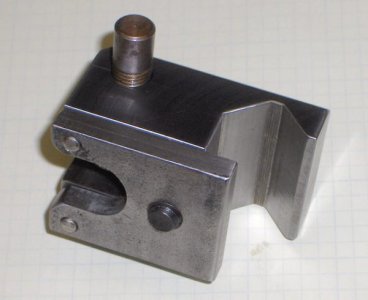
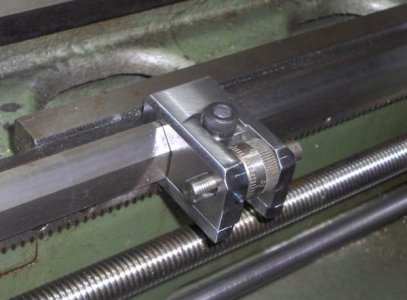

I measured the lathe ways and designed a new stop body that would re-use the already engraved dial and 7/16-20 rod from the existing stop. Trouble is, I just don't have a decent supply of larger "chunks" of steel or cast iron. Matter of fact, the only things I could find were a couple of very rusty 4" long pieces of 2" steel rod, pedigree unknown. IIRC, I'd used these on an outdoor gadget for a number of years. I could carve the body of the stop out of one of these, though the corners would be lopped off by the 2" circle ... OK, pretend these are chamfered edges!
After giving the steel a good soak in Evaporust and a good scrub to remove what little paint was left, I got out my new Shars face mill and started to go for it. The mill did a very nice job, and I was getting tan-to-blue chips. Whatever this steel is, it was very easy to machine. Here's the completed first face, plus some of the swarf.

Here's the completed body of the stop, along with a second chunk of raw material. Though I'd made a couple of setup/machining errors in the process, I was able to correct them successfully, and had a whale of a good time doing it!

... and the completed stop, ready to go to work ...



Last edited:



